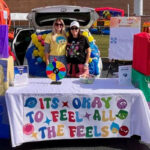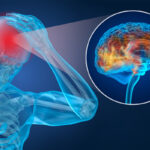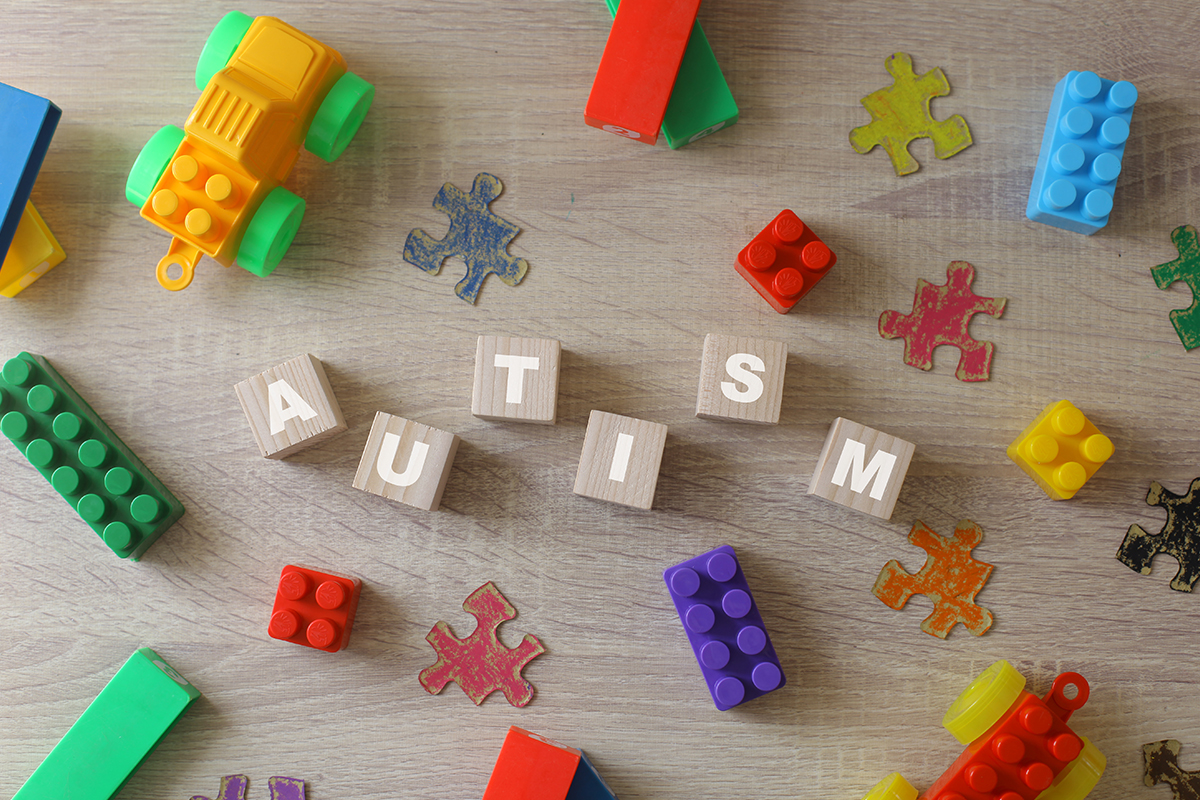Is Autism a Learning Disability?
The short answer to this question is “no.” The long answer is a bit more complicated.
For one thing, an autistic child may have a learning disability in addition to autism. For another, autistic children and those who have one or several different learning disabilities can have similar symptoms. Let’s begin this discussion by first defining autism. According to MedicineNet.com, Autism is “a spectrum of neuropsychiatric disorders characterized by deficits in social interaction and communication, and unusual and repetitive behavior. Some, but not all, people with autism are non-verbal.” 1
What causes this condition is still being debated and researched. However, currently, most researchers agree that it is the result of a gene defect that is either inherited or acquired. The reason for this acquisition has caused much debate. Some theorize, for example, that it’s caused by various vaccines given to children between birth and 18 months of age. Others say exposure to different substances in the environment or in the child’s diet is the culprit. However, nothing has been proven so far one way or another. We do know that, contrary to past speculation, autism is NOT the result of emotional trauma.1
What does autism mean?
 According to WebMD, the name “autism” comes from “autos,” the Greek word for self and references a condition in which the patient is an “isolated self.” A Swiss psychiatrist, Eugen Bleuler, was the first to use the term in this context referring to a group of symptoms related to schizophrenia. Then in the 1940s, American researchers began using it when describing young children with emotional problems that affected social behavior. Dr. Leo Kanner from Johns Hopkins University also used the term to explain the behavior of some children he was studying who were severely withdrawn. 2
According to WebMD, the name “autism” comes from “autos,” the Greek word for self and references a condition in which the patient is an “isolated self.” A Swiss psychiatrist, Eugen Bleuler, was the first to use the term in this context referring to a group of symptoms related to schizophrenia. Then in the 1940s, American researchers began using it when describing young children with emotional problems that affected social behavior. Dr. Leo Kanner from Johns Hopkins University also used the term to explain the behavior of some children he was studying who were severely withdrawn. 2
Between 1943 and 2013 various forms of autism were diagnosed and named including Asperger’s syndrome; Pervasive Developmental Disorder (PDD), Not Otherwise Specified (NOS) and Heller’s Syndrome or Childhood Disintegrative Disorder (CDD). Then, in 2013, the American Psychiatric Association updated the Diagnostic and Statistical Manual of Mental Disorders (DSM) that put all of these conditions under a single diagnosis referred to as Autism Spectrum Disorder (ASD). Under this revised definition, there were two areas that determined diagnosis: social communication/ interaction and restricted and repetitive behavior. 3
The Centers for Disease Control and Prevention (CDC) estimates that about one in every 68 children in the U.S. has been identified as having ASD. The disorder affects children of every race, ethnic group and socioeconomic background and is five times more common among boys than among girls.4
Here are some of the symptoms of autism in children.5
• They seem to be disconnected to others
• They have an apparent lack of empathy
• They are uninterested and lack curiosity about others
• They may have emotional outbursts inappropriate the situation
• Their language development is often delayed
• They may resort to non-verbal communication instead of speech
• They lack the ability to interpret body language and other nonverbal cues.
• They use language in a very literal way
• They engage in repetitive behaviors – especially when stressed
• They may seek out – or avoid – sensory input
Yet autistic people can be high achievers.
 One example that comes immediately to mind is Temple Grandin.6 In 2010, Temple was included in Time Magazine’s Time 100 – a list of the one hundred most influential people in the world. According to Wikipedia, Grandin feels it was her autistic perspective that enabled her to became “one of the first scientists to report that animals are sensitive to visual distractions in handling facilities such as shadows, dangling chains, and other environmental details most people do not notice.” Acting on these insights, she designed a more humane system for slaughtering cattle that has since been adopted by meat processors around the world.
One example that comes immediately to mind is Temple Grandin.6 In 2010, Temple was included in Time Magazine’s Time 100 – a list of the one hundred most influential people in the world. According to Wikipedia, Grandin feels it was her autistic perspective that enabled her to became “one of the first scientists to report that animals are sensitive to visual distractions in handling facilities such as shadows, dangling chains, and other environmental details most people do not notice.” Acting on these insights, she designed a more humane system for slaughtering cattle that has since been adopted by meat processors around the world.
Autism is regarded by some as part of neurodiversity.
The concept of neurodiversity is based on the supposition that everyone’s brain operates differently and that these differences are not only natural, but can enrich the community as a whole. Instead of focusing on a “cure” for autism, those who favor this view believe the goal of autistic therapy should be to help patients and society make the most of everyone’s individual strengths. In their view, autism and learning disabilities are part of the whole range of human behavior rather than abnormalities that exist apart from “normal” brain function.7
Differences between autism and learning disabilities
The main challenges of autism center on social understanding, communication and person-to-person interaction. While this may also occasionally be a problem for some kids with a learning disability, it is not typical. Issues with social interaction in such children are usually due to a specific learning challenge. For example, a child who has problem processing visual information may seem to stand too close to another person during a conversation. However, this is due to their inability to properly judge distances not, as may be the case with an autistic child, a lack of awareness that they are invading someone else’s personal space. Knowing just why a certain behavior takes place is crucial in understanding how to help each child.
Learning Disabilities involve a wide range of problems effecting processing information.
A learning disability is not related to IQ and should not be confused with a learning problem due to a visual or hearing handicap, mental retardation or  cultural, economic or environmental disadvantages. It’s caused by a difference in brain structure that changes how an individual processes information.
cultural, economic or environmental disadvantages. It’s caused by a difference in brain structure that changes how an individual processes information.
As a rule, people with a learning disability are of average or above average intelligence. Because of their disability, there can be a significant gap between their potential and actual achievement. Sometimes these disabilities are described as “hidden” because the person seems bright and aware and yet may seem to be unable to reach the same academic skills level as his or her peers.
A learning disability cannot be “cured,” but with appropriate support and training, it can be improved, allowing people to reach a higher level of success in school, at work and in other areas of their lives.
Below is a brief description of different types of learning disabilities that may exist on their own or in combination with others.8
• Auditory Processing Disorder (APD)
In people with this condition, sound travels to the ear but may be misinterpreted when it reaches the brain. The result is nuanced differences in the way words sound are not recognized even though the words are heard. There may also be issues with identifying where sound is coming from, making sense of the order in which sounds are heard and being able to block out disruptive background noise.
• Language Processing Disorder (LDP)
This is a specific form of APD in which the person has difficulty attaching meaning to certain sound groups that form words and sentences. All sounds coming through the brain are affected by APD, but only sounds involved with language are an issue with LPD.
• Dyscalculia
This learning disability specifically affects the ability to understand numbers and remember math facts. People with dyscalculia find it difficult to comprehend math symbols and may have trouble memorizing tables, organizing numbers, counting and telling time.
• Dysgraphia
This disability affects written communications since it can result in illegible handwriting, poor spatial planning on paper and spelling. It can also make it difficult to compose and express ideas while physically writing them.
• Dyslexia
Dyslexia is often referred to as a Language-Based Learning Disability and may effect between 70% to 80% of those with reading problems. The severity of this disorder differs from person to person but it affects reading fluency, comprehension and recall, which, in turn, affects writing, spelling and sometimes speech.
• Non-Verbal Learning Disabilities
With this disorder, there is a significant difference between a person’s higher verbal skills and fine motor, visual-spatial and social skills. Consequentially, there is a problem noticing body language, facial expressions and other non-verbal cues that are often as important as the spoken word.
• Visual Perceptual/Visual Motor Deficit
Those who have this condition have difficulty understanding what they see or reproducing it in a drawing or copy. They have poor eye and hand coordination, hold writing instruments awkwardly, and miss subtle differences in the way letters are printed or shapes are produced.
We still don’t know what causes learning disabilities
As with autism, the causes of Learning Disabilities are still being explored. But they seem to be related to issues with brain structure and are usually present at birth. They may be inherited genetically or due to damage incurred in vitro from substance abuse, exposure to toxins like lead in the water or paint, poor nutrition or other factors affecting the mother’s health during pregnancy. Research also indicates that children who are not are given enough affection, attention and stimulation early on are more likely to develop learning disabilities than their more fortunate peers.8
Treatment differs from child to child
Depending on the particular learning disability, people can use various strategies to deal with and minimize the negative results of their handicap. Teachers and learning specialists start by developing programs that build on the disabled learner’s strengths to compensate for their weaknesses. As a rule, the earlier this intervention takes place, the more successful it will be. When children function to the best of their abilities as soon as possible, it goes a long way to preventing problems with self-esteem, depression and other negative emotions throughout their lives.
Various techniques are used by educators and caregivers
Various methods have been developed to administer education under IDEA that are designed to allow children to make the most of their abilities and to compensate for their lacks. Below is a brief list of some of the more common techniques used by teachers and aides in special education:8
• Multi-sensory experiences to teach abstract concepts including the use of music, graphics and video
• Offering immediate feedback on performance
• Allowing extra time to finish tasks
• Recording directions and information for audible delivery of assignments and information so children can hear directions as well as see them written down
• Giving oral testing instead of written tests
• Providing the opportunity to create homework reports in video instead of in a written format.
• Presenting students with written notes, outlines and study guides that they can use without having to create them
• Ensuring a quiet environment with minimal distractions
• Alerting the child to any changes in routines or the environment to minimize anxiety
Neurofeedback
While many of the techniques mentioned above help children deal with autism and various learning disabilities, none of these methods is able to reduce or eliminate the disability itself. Neurofeedback, by contrast, actually improves the brain’s ability to function by training specific areas to learn and execute various skills. These include memory, executive function, emotional control as well as the ability to absorb and process information more effectively.
Neurofeedback deals with different areas of the brain that are all must work together during the learning process. These separate parts of the brain must communicate with each other at a very high speed. If one part of the brain operates at a different speed than another, the ability to connect is impaired and so is the facility to learn. Neurofeedback provides connectivity training to enhance the coordination of different brain sectors. By improving the brain’s “timing” in this way, the power to learn and to communicate can be significantly increased.
Another advantage neurofeedback offers over pharmaceutical and other forms of therapy is that the changes it produces in the brain are permanent ones. Since Neurofeedback is non-invasive, painless and has little or no side effects, it can be used by children as young as four years old, providing early intervention for the most productive result. For all of these reasons it is being used more and more to help both autistic children and those with learning disabilities.
For more information on how CMS is using neurofeedback to help autistic children and those with a learning disability, please contact us at (847) 656-5080. We’d be happy to tell you more, at a time convenient for you.
1 Medical Definition of Autism, Medicinenet.com, https://www.medicinenet.com/script/main/art.asp?articlekey=2399
2 “What does Autism Mean?” WebMD, https://www.webmd.com/brain/autism/what-does-autism-mean#1 2017
3History of Autism, ProjectAutism.com, http://projectautism.org/history-of-autism 2017
4Autism Spectrum Disorder: Communication Problems in Children, National Institute on Deafness and Other Communication Disorders, https://www.nidcd.nih.gov/health/autism-spectrum-disorder-communication-problems-children
5 Lockhart, Emily, 10 early autism symptoms in young children, Activebeat.com, http://www.activebeat.com/your-health/children/10-early-autism-symptoms-in-young-children/ 2017
6 Autism Acceptance Month: Acceptance is an Action, http://www.autismacceptancemonth.com/resources/101-3/autism-acceptance/neurodiversity/2017
7 Temple Grandin, Wikipedia, http://www.autismacceptancemonth.com/resources/101-3/autism-acceptance/neurodiversity/
8 Learning disabilities – “Types of Learning Disabilities”, Learning Disabilities Association of America, https://ldaamerica.org/types-of-learning-disabilities/ 2017






